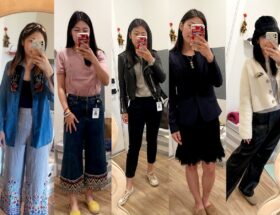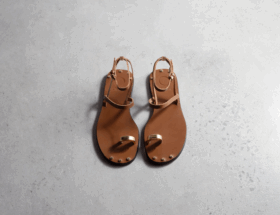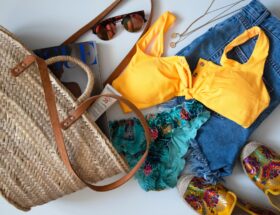Fashion trends are generally notorious for being changeable, especially in the 21st century, when one trend tends to be rapidly overtaken by another in a relatively short time. These rapid shifts occur largely due to the internet: before this, trends had a relatively longer shelf-life from their beginnings through to peak popularity and then obsolescence.
The minimalism trend of the mid-late 2010s prompted many to strive for the simplicity of a capsule wardrobe containing a few interchangeable classic pieces such as a plain white button-down or a pair of good quality black trousers.
While these are all useful staples to have on standby, less utilitarian types might find themselves yearning for a little more color in their closets. Some trends tend to reappear, so when putting together your own wardrobe it can be a good idea to take a look at which pieces to keep hold of for future seasons, and which to shop for.
It can be difficult to know what to look for and what to keep aside, so to assist you in creating your own fashion time capsule, here is our definitive guide on what to look for, whether you’re browsing boutiques selling vintage dresses by top end designers or thrifting second-hand items.
History Repeating
When fashion editor Miranda Priestly comments on florals being “groundbreaking” in the 2006 movie “The Devil Wears Prada”, there’s an element of truth to her sarcasm: repeat fashion trends tend to be seasonal, as well as cyclical: which is why we tend to see brighter, lighter colors in the summer and darker hues come wintertime, but that’s not the only reason as to why some trends keep returning.
A popular theory is that trends repeat themselves every 20 to 30 years, although some argue it’s now less. This is due in part to a renewed appreciation for older fashion by younger people, in addition to designers drawing on inspiration from their own parents.
In addition to nostalgia, there’s a number of other factors to consider, including sustainability and the economy: as more people have become more informed about the detrimental effects of fast fashion, they may be more likely to purchase used clothing. Additionally, in challenging economic times, pre-worn items can offer a budget-friendly way to update one’s wardrobe.
The Comeback List
A universally unflattering or impractical style tends to make some trends short-lived. On the other hand, there will always be specific styles of clothing that keep coming back into fashion repeatedly. If you already have pieces related to these trends in your closet, or if you want to shop for them, here is our list of styles to watch out for:
1910s - Ruffled Dresses
The quintessentially feminine ruffles on silk and satin dresses in the 1910s still look good a century later. While some styles of Edwardian dress would be considered impractical for modern use, ruffles on a tea-length dress can help achieve this look while allowing for maximum mobility.
1920s - Fur
Fur cocoon coats were all the rage throughout the 1920s, and still look fabulous today whether paired with casual or more formal outfits, though these tend to be faux, rather than animal pelts. Fringed wraps were also popular - and are still a great way to accessorize simple outfits.
1930s - Bias Cut
Cut at a 45 degree angle, the bias cut dress was originally invented by French couturier Madelene Vionnet in the 1920s fashion but came into its own in the 1930s when Vogue Magazine promoted “smooth and free” gowns. The bias cut has been in and out of fashion since, yet remains universally flattering.
1940s - Tailored Suits
The trend for tailored, androgynous suits of the 1920s was repopularised in the 1940s by actresses like Ingrid Bergman. Later they would make a reappearance in the form of Yves Saint Laurent’s breakout trend for the “Le Smoking” suit - evidence that breaking the sartorial boundaries of gender has always been chic.
1950s - The Swing Dress
When thinking of the 1950s, few styles spring so readily to mind as the iconic swing dresses of the era. These voluminous, A-line skirts have re-emerged several times over the past few decades, and never fail to look charming, dressed up or down.
1960s - The Mini Skirt
Accredited to a number of designers including André Courrèges and Mary Quant (who reportedly named it after her favorite model of car), the mini skirt trend first gained popularity during the mod scene in London before gaining traction across the globe. Even today, it shows no sign of slowing down.
1970s - Bell Bottoms
At one point, it seemed unimaginable that flared trousers would ever be seen again, yet following a brief revival during the 1990s and 2000s, they are making a comeback once again, and with good reason: the slim fit at the waist and flowing shape creates a long, lean silhouette.
1980s - Off-the-Shoulder
Often regarded as the decade fashion forgot, 1980s style has been the all-too frequent butt of pop culture jokes, even with puff sleeves making an unexpected return. Some styles from this era withstood the test of time, including off-the shoulder tops.
1990s - The Little Black Dress
Following the maximalist aesthetic of the 1980s, the 1990s was a more pared-back affair. Few other pieces defined this era quite like the little black dress. Originating in the 1920s, the 90s version of the LBD was form-fitting and sleeveless and has since become a staple of capsule dressing.
2000s - Skinny Scarves
Much like the 1980s, this was a decade with some questionable fashion moments. Thankfully, there are a few that look set to return in decades to come, including the skinny scarf. Available in an array of colors and fabrics, this versatile accessory still looks as good today as it did then.
2010s - White Tennis Shoes
For a style to be considered vintage, it must be between 20 to 100 years old, but there are still styles from the 2010s fashion that may well become “future classics”. One example is the plain white tennis shoe, an understated, versatile classic that still holds up today.
Finders, Keepers
Once a style comes back in vogue it’s possible to buy new while the item is still on trend - but original vintage items can also be sourced via online or brick-and-mortar outlets such as boutiques or charity shops.
If you are purchasing vintage shoes, their condition depends on how heavily they were worn by the previous owner. It’s also worth remembering that shoes tend to mold to the individual wearer’s feet and must be properly sanitized before wearing.



